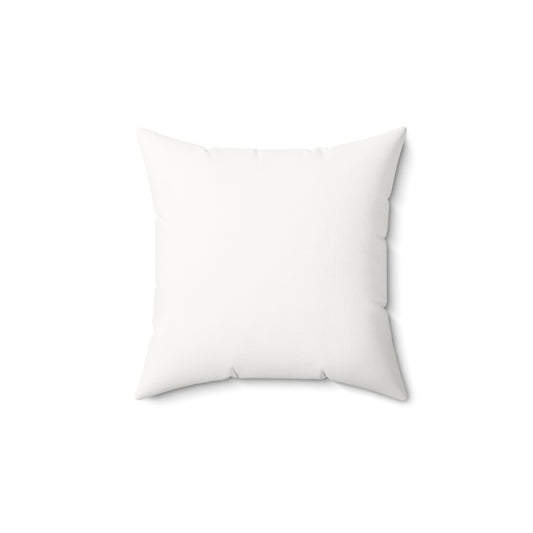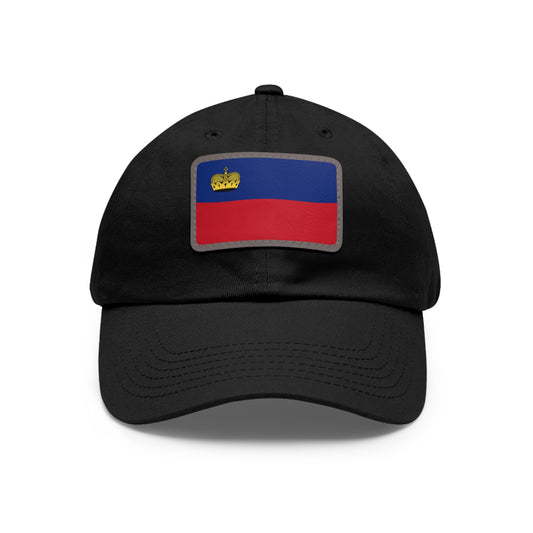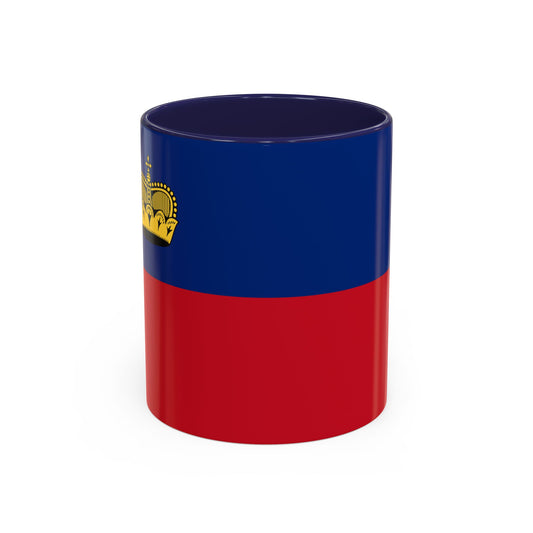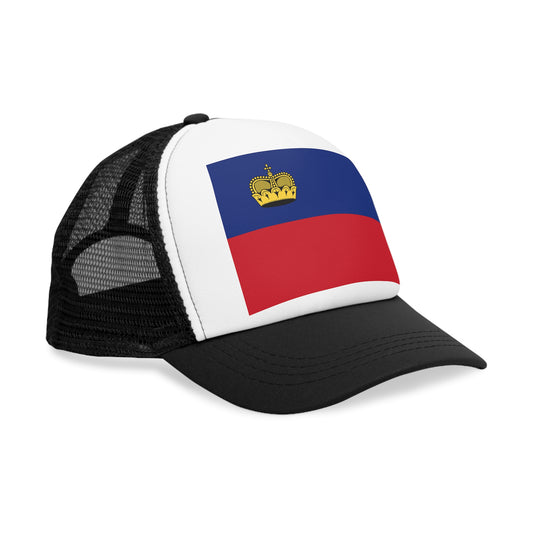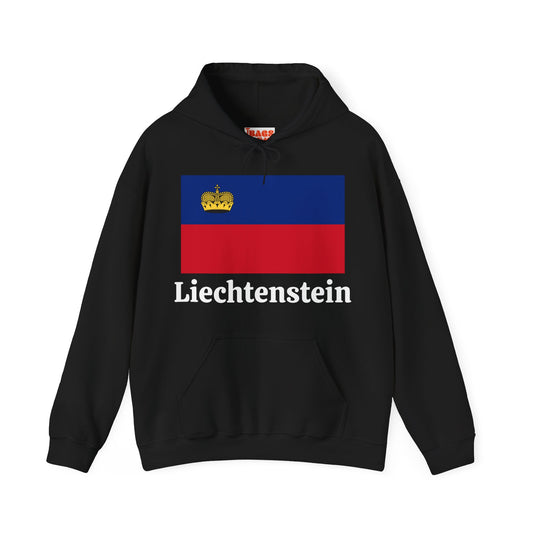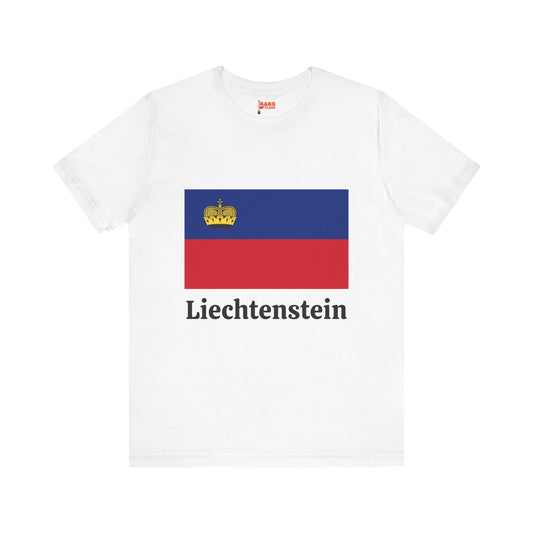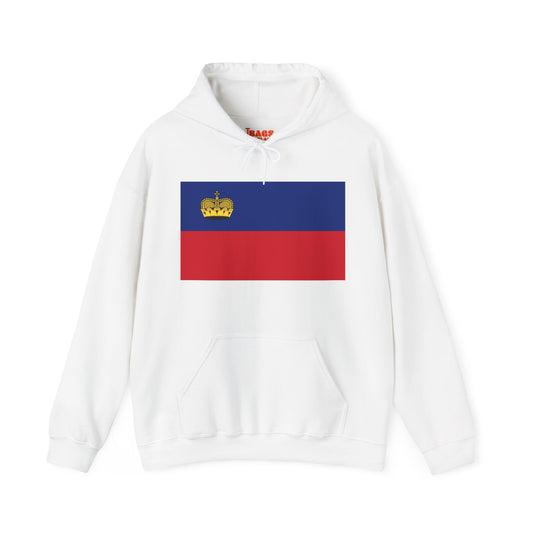-
Liechtenstein Sweatshirt
Regular price $34.15 USDRegular priceUnit price / per -
Liechtenstein Flag Sweatshirt
Regular price $34.15 USDRegular priceUnit price / per -
Liechtenstein Pillow
Regular price $22.65 USDRegular priceUnit price / per -
Liechtenstein Backpack
Regular price $59.79 USDRegular priceUnit price / per -
Liechtenstein Leather Patch Hat
Regular price $18.85 USDRegular priceUnit price / per -
Liechtenstein Mug
Regular price $11.65 USDRegular priceUnit price / per -
Liechtenstein Trucker Cap
Regular price $14.90 USDRegular priceUnit price / per -
Liechtenstein Hoodies
Regular price $34.40 USDRegular priceUnit price / per -
Liechtenstein T-shirts
Regular price $22.79 USDRegular priceUnit price / per -
Liechtenstein Flag on Hoodies
Regular price $34.40 USDRegular priceUnit price / per -
Liechtenstein Flag on T-shirt
Regular price $22.79 USDRegular priceUnit price / per
Collection: Liechtenstein
The Liechtenstein flag, also known as the flag of Liechtenstein, is a symbol of the small European country located between Switzerland and Austria. This flag holds significant historical and cultural value for the people of Liechtenstein. We will explore the design, history, symbolism, and current relevance of the Liechtenstein flag and some additional interesting facts about it.
Overview of the Liechtenstein Flag's Design and Colors

The national banner of Liechtenstein showcases a distinctive and symbolic array of colors and emblems. Composed of two equally sized horizontal stripes, the upper band is a vivid blue while the lower one is a deep red. Prominently positioned towards the hoist side is a golden crown, an element that distinguishes the flag with a touch of regal elegance. This crown is intricately designed, featuring a base, three visible arches, and a central red orb topped with a cross, reflecting the principality's sovereignty and the ruling family's status. The choice of blue and red as the flag's primary colors is deeply rooted in the nation's history, echoing the traditional colors long associated with Liechtenstein. The harmonious combination of these colors and the crown symbolizes a blend of the country's natural beauty, its princely heritage, and the unity of its people. This flag, therefore, stands as a beacon of national pride and cultural identity, visually encapsulating the essence of Liechtenstein's past, present, and aspirations for the future.
Historical Context of the Liechtenstein Flag
The evolution of the Liechtenstein flag reflects the nation's journey and its growing sense of identity. Initially adopting the blue and red bands as part of its regalia, these colors were formalized into a flag in the 18th century. A significant turning point came in 1937 when Liechtenstein found itself sharing a virtually identical flag with Haiti at the 1936 Summer Olympics. This prompted a unique addition to their national symbol - the inclusion of the gold crown in 1937, designed to celebrate and underscore the principality's sovereignty and the noble lineage of the ruling House of Liechtenstein.
The definitive design we recognize today was established in 1982, marking a consolidation of the country's visual identity on the global stage. This progression not only signifies changes in aesthetics but also underscores the principality’s evolving story, embedding deeper meanings and associations into the fabric of the nation’s flag. This historical journey, punctuated by adjustments to its flag, encapsulates Liechtenstein's adaptability and pride in its heritage, solidifying its status and distinctiveness among the community of nations.
Symbolism Behind the Liechtenstein Flag

The symbolism woven into the fabric of the Liechtenstein flag encapsulates elements of the nation's heritage, natural environment, and sovereign identity. The blue stripe across the top half of the flag mirrors the expansive sky above, a nod to the open and forward-looking aspirations of its people. In contrast, the red stripe at the bottom reflects the earth and the rugged alpine terrain that characterizes much of the country's landscape, symbolizing the resilience and steadfastness of the Liechtenstein population.
Central to the flag's design is the gold crown, meticulously detailed and positioned with intent. This crown is more than a decorative element; it signifies the princely powers and the historical significance of the House of Liechtenstein, underlining the nation's monarchical structure and the unity between the ruling family and its citizens. Together, these symbols combine to tell the story of a small country with a deep connection to its land, a proud history, and a commitment to the principles of sovereignty and unity. This array of symbolism serves as a daily reminder to the people of Liechtenstein of their unique identity and the values that bind them.
Current Relevance of the Liechtenstein Flag
Today, the flag of Liechtenstein plays a pivotal role in fostering national unity and pride among its citizens. It is prominently displayed during significant national events such as Liechtenstein National Day and military ceremonies, symbolizing the country's sovereignty and the deep-rooted values it stands for. In addition, the flag adorns various official settings, including government buildings and embassies around the world, serving as a representation of Liechtenstein's identity on the global stage. Its presence at international forums and sports events, such as the Olympics, reinforces the country's active participation and pride in its national heritage.
The flag also holds a place of honor during educational events, where the significance of its symbols is taught to younger generations, ensuring the continuity of national values and identity. Its usage extends beyond formal occasions, as many citizens proudly display the flag during cultural festivals and public celebrations, showcasing their allegiance and love for their country. This enduring relevance underscores the flag’s role not only as a national emblem but also as a unifying symbol that encapsulates the collective spirit and aspirations of the people of Liechtenstein.
Additional Facts about the Liechtenstein Flag
Unique protocols and traditions surround the display and handling of the Liechtenstein flag, reflecting the country's rich cultural heritage. Unlike many other nations, Liechtenstein maintains a steadfast protocol where its flag is never to be flown at half-mast. This rule signifies unyielding respect and honor towards the sovereignty the ruling family embodies. This practice underscores Liechtensteiners' deep reverence for their monarchial system and national symbols. In terms of dimensions, the flag adheres to a precise 3:5 ratio, ensuring a balanced and proportional display of its vibrant blue and red stripes. This meticulous attention to detail highlights the importance of visual harmony and the significance of each element's representation.
Another noteworthy aspect of the Liechtenstein flag is the inclusion of a crown, a rare feature among national flags. This emblem serves as a proud reminder of the principality's monarchical governance and the historical lineage of the ruling House of Liechtenstein. Although the flag shares some similarities with other national banners, such as Haiti's, the specific colors, emblem placement, and symbolism distinctly set it apart, making it a unique representation of Liechtenstein's national identity. These intriguing facets of the Liechtenstein flag not only foster a sense of pride among its people but also contribute to the global tapestry of national symbols, each telling its own story of heritage, unity, and pride.






